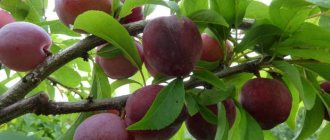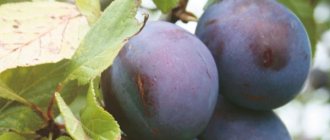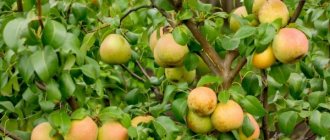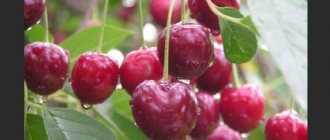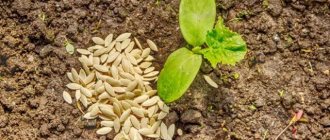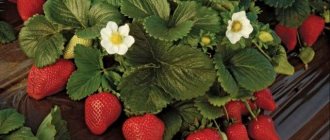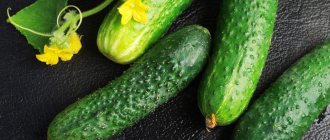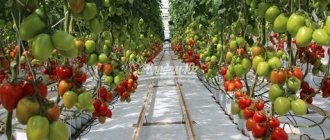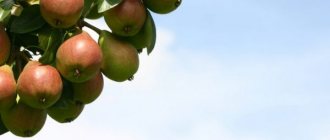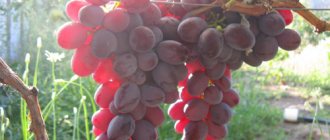Description and features
Yakhont plum belongs to the category of strong and fast-growing fruit trees. Its average height is five and a half meters. A distinctive feature is the compact crown of medium density and spherical, slightly raised shape. This crop is characterized by upright growing shoots with smooth brown bark. Yakhont plum has elongated and pointed leaves in the shape of an ellipse, having a light green color. Their matte and slightly wrinkled surface without lint has a slight bend in the central vein.
The fruit of the Yakhont plum is a large drupe, weighing up to thirty grams. The color is yellow with a reddish blush and a white waxy coating. Beneath the thin skin lies tender yellow flesh. It is very juicy and has a rich sweet and sour taste, which is dominated by pleasant sourness due to the vitamin C content.
The main features of the Yakhontovaya plum variety are:
- high early fruiting - the first fruits appear 3-4 years from the moment the tree is planted;
- ability to transport;
- medium-late ripening - in mid or late August;
- yield from one tree - 50-70 fruits;
- strong immunity to common diseases of fruit trees;
- universal use of fruits.
Description of the variety with photo
The tree is vigorous, up to 5–5.5 m tall, with a compact crown of medium density. The shoots are straight and brown. The leaves are elliptical, light green, matte, smooth. The fruits are round, yellow in color with a pink speckled coating, average weight 30–35 g. The pulp is yellow, tender, juicy, sweet and sour taste. Tasting score 5 points according to the official State Register of Plants. The fruiting period begins in the 3rd–4th year, the harvest begins in August.
Yakhontova’s fruits are almost spherical, rich yellow in color.
The fruits contain:
- dry matter 15.3%,
- sugar 9.0%,
- acids 3.5%,
- vitamin C 14.5 mg/100g.
The variety is winter-hardy, this applies to both wood and flower buds, in the process of state. tests from 1991 to 2005 withstood frosts in the middle and end of winter down to minus 33o; drought-resistant, little damaged by fungal diseases. Fruiting is regular. Self-fertility is partial, therefore it requires the proximity of pollinating varieties, the best of which are Pamyat Timiryazev, Skorospelka red, and Vengerka Moskovskaya.
The variety is zoned for the Central region of Russia.
Advantages and disadvantages of the variety, table
| Advantages of the variety | Its disadvantages |
| High tasting fruit rating | Tallness |
| Regularity of fruiting | Partial self-fertility |
| High winter hardiness and drought resistance | |
| Early entry into the fruiting period | |
| Resistance to a number of fungal and viral diseases | |
| Good yield |
Main characteristics of the variety
When deciding to plant Yakhontovaya plum, you should familiarize yourself with the main characteristics of the hybrid variety - how resistant it is to frost, drought, diseases and pests, how it is pollinated, in what periods it blooms and bears fruit.
Drought resistance and winter hardiness
The Yakhontova plum is characterized by an average level of drought resistance. Excess and lack of moisture equally harms the plant. The plant tolerates frost well, provided that shelter is created before wintering.
Pollinators
Yachon plum is a partially self-fertile tree, but requires pollinators to increase yield. Let's consider which plum varieties are most suitable for this purpose.
Hungarian
Among all varieties of plums, Hungarian plum is especially popular, which is distinguished by its excellent taste properties, the possibility of long-term storage and high yield. It is suitable for harvesting prunes. Its fruits have a dark blue-violet color with a white coating. There are several known subspecies of Hungarian - Moscow, Voronezh, Italian, Michurinskaya, Korneevskaya and others.
Memory of Timiryazev
The plum variety Pamyat Timiryazev is a tree-like plant bred by breeders in the mid-twentieth century. The large berries are yellow in color with miniature subcutaneous dots, a light waxy coating and a reddish blush on the side facing the sun. This is a late variety that ripens towards the end of August or beginning of September.
Red early ripening
The plum variety Skorospelka is widespread in central Russia. Characterized by high resistance to drought and frost. The fruits of this plant are round in shape and raspberry-violet in color. Flowering begins in May, and ripe fruits can be collected in the second half of August.
Flowering period
Yakhontovaya plum belongs to the early varieties. Its flowering period begins at the end of April and continues until the first days of May.
Ripening time
You can enjoy the ripe fruits of the Yakhont plum throughout August.
Productivity and fruiting
This hybrid variety is characterized by regular, stable fruiting. Each mature tree bears twenty to thirty kilograms of plums. And in the years of the highest yield of Yakhontov plum - up to fifty.
Resistance to diseases and pests
Yakhontovaya plum is minimally susceptible to diseases and harmful insects. However, under unfavorable conditions, the Yakhontovaya plum tree may suffer from an invasion of parasites. To prevent this, it is necessary to periodically spray the trunks, branches and leaves of trees.
Plum Yakhontovaya
The Yakhontovaya plum appeared as a result of the work of breeders S.N. Satarov and Kh.V. Enikeev and from the All-Russian Breeding and Technological Institute of Horticulture in Moscow. Parents: Eurasia 21 x Smolinka.
The variety is recommended for breeding and growing in the Central region of the country. In the first years, the variety requires additional shelter. Can be grown in the south.
Description of the variety with photo
The variety is fast-growing and drought-resistant. Fruiting begins in the third or fourth year after planting. Flower buds are almost not damaged by spring frosts. Plum is immune to many diseases and pests.
The harvest is annual and occurs at the end of August. 45-50 kilograms of tasty fruits are removed from the tree. At the moment of ripening, the fruits take on a bright golden color with a speckled blush. The skin is thin. Fruit weight is 25-35 grams.
The shape is rounded and elongated. The pulp is golden, juicy, with a sweet dessert slightly sour taste.
The tree of this variety grows powerful, reaching 5.5 meters in height. The crown is neat, round, medium thick. Grafting to low-growing varieties reduces tree growth.
Features of cultivation and care
Yakhontovaya reproduces by grafting and budding. In the absence of a mother tree, seedlings are purchased from gardeners or nurseries.
Good development and productivity depend on the place of planting and care.
Planting is done in early spring (before the start of sap flow). The place for planting plums should be well lit and not flooded. The area is cleared of debris, grass, and dug up.
The width and depth of the planting pit is half a meter. Its preparation has been underway since the fall. A wooden support is driven into the middle part of the hole to tie the plum after planting.
The seedling is installed in the center of the hole and sprinkled with a mixture of turf soil, organic matter, and mineral fertilizers. When planting, the soil is compacted in layers. This protects the roots from the formation of voids. The root collar remains above the ground at a height of 5 centimeters. After planting, the circle around the trunk is watered with 2 buckets of water.
To preserve moisture, the earth is mulched with peat, humus or sawdust. To protect from gusts of wind, the tree is tied to a support on the north side.
Care consists of weeding, regular watering, loosening the soil and fertilizing.
The interval between watering should be 2-3 weeks. In summer, one tree requires about 50 liters of water. The soil should not dry out during harvesting. After watering, weeds are removed, the soil is loosened and mulched.
Every year, in the spring, the soil is tested for acidity and when the indicators increase, dolomite flour or ash is added to the circle around the trunk.
In the second year of the tree's life, fertilizing with nitrogen-containing fertilizers, nitrophoska and potassium-phosphorus fertilizers is applied. Fertilizing is done in spring, summer and autumn.
- In the spring, 30 grams of urea are added per meter.
- Every year, during the ripening of fruits, one and a half buckets of rotted manure, 250 g of wood ash, 80 grams of superphosphate, 30 urea, 30 grams of potassium chloride are added.
- Urea and nitrogen-containing fertilizers are applied in the spring.
- In autumn, potassium and phosphorus fertilizers are used.
To facilitate tree care, pruning and shaping are done a year after planting. The tree is formed at the level of the trunk (up to 40 centimeters). There are about 7 branches left for the crown. Then annual pruning and thinning of young shoots is carried out.
Formation continues until the first fruiting, then it stops and only sanitary pruning of the crown is performed. The formed crown has the shape of a glass.
In the first years after planting, the tree is covered for the winter. The trunk is covered with peat, fallen leaves, and humus.
Poor care and improper pruning can lead to the appearance of diseases and pests.
To protect the tree from moniliosis, clusterosporia, plum aphids, codling moths, and black plum sawflies, preventive spraying with chemicals, digging up the trunk circle in the spring, and pruning damaged branches are carried out. When diseases appear, Bordeaux mixture is used to combat them.
Viral diseases do not affect this plum variety.
The following varieties are planted nearby as pollinators: Skorospelka red, Pamyat Timiryazev, Hungarian Moscow.
The Yakhontovaya variety has many advantages and a minimum number of disadvantages. Such characteristics attract many gardeners.
Tips for caring for plums and choosing a variety: video
Reviews:
The Yakhontovaya variety has been grown in my garden for 12 years. The tree is tall and this is the only disadvantage of this plum, since harvesting is not very convenient. Otherwise, the variety is simply excellent, the fruits are quite large and very tasty. Most of all, my family loves these plums fresh, but they also do not refuse jam, preserves or juice and consume them with pleasure.
I have been growing Yakhontova plum for many years. Many neighbors and friends ask to sell seedlings and I am happy to share this beautiful plum. My wife makes a very tasty liqueur from the fruits, which we serve on major holidays.
How to plant correctly
Before planting Yakhontova plum, it is necessary to correctly determine the site, prepare nutritious soil, as well as select high-quality seedlings and carry out preliminary preparation. It is also important to observe the optimal timing and know which neighboring plants are favorable for a given plum variety and which are undesirable.
Location requirements
The most favorable place for planting Yakhont plum is a small hill. For most of the day it should be well warmed by the sun's rays. Light shade is allowed in the morning and evening. It is strictly not recommended to plant Yakhont plum in the lowlands due to the snow melting for too long in the spring and the stagnation of cold air.
The close location of groundwater also harms Yakhontova plum - the distance to the soil surface should be no more than one and a half meters.
It is important to provide protection from the wind. For this purpose, it is advisable to have a hedge, fence or outbuildings on the north side.
See also
Description and technology of growing cherry plum variety Mara, pollinators
Read
Yakhont plum needs loamy or sandy loam soil - both options are fertile. It is not recommended to plant this fruit crop in places where old trees have recently been uprooted - this is due to the fact that the soil in such places is depleted and may even be contaminated.
Preparing the site and pit
The area chosen for planting the Yakhontova plum must be cleared of weeds and loosened.
You need to start preparing the hole two weeks before the planned planting. The optimal width is 80 cm and depth 60 cm.
You should dig up the soil at the bottom and then water it generously. Then the hole should be filled to the middle with a mixture of fertile soil, humus and compost - thanks to this, the plum will be provided with nutrition for the first 3-4 years after planting.
How to select and prepare planting material
You should use strong and healthy Yakhont plum seedlings, reaching half a meter in height. The thickness of the shoots should not be less than two and a half millimeters.
High-quality planting material should be purchased only from reliable sources - garden centers and special nurseries.
Each seedling must be carefully inspected for signs of mold and other damage. If the roots are overdried, you must first soak them in cool water for several minutes.
Planting scheme
Yakhont plum will grow well and bear fruit steadily if you follow a certain pattern when planting. Planting holes for trees should be located at a distance of at least three meters:
- First of all, you need to prepare the soil for Yakhontova plum - add humus, 200 g of superphosphate and 80 g of potassium salt to the fertile soil, and then mix the components thoroughly.
- Pour the nutrient substrate into the previously prepared planting hole.
- Lightly press the soil and wait for it to settle.
- Add the required amount of soil to the hole and place the seedling in the center.
- The roots of the tree need to be straightened and then covered with soil.
- Finally, compact the soil and water the plant with warm water.
Recommendations for choosing deadlines
There are two options for planting Yakhont plum - spring and autumn. In the spring, it is advisable to plant this variety of fruit tree in March or April, before the buds begin to bloom. The air temperature should not fall below +5 degrees. Recommended timing may vary slightly depending on region.
For the middle zone, the optimal time will be the end of April, for the south - the end of March, and for the Urals - the beginning of May.
Autumn planting of Yakhont plum is relevant for the warm southern regions of the country. It is held in September or October with an average daily air temperature of +10 degrees.
Acceptable and Inadmissible Neighbors
Favorable for Yakhontova plum is the proximity to any varieties of apple trees, currants and raspberries. But near cherries, cherries and pears, the development of this fruit crop is problematic.
Features of planting crops on the site
Despite the relative undemandingness of the Yakhontovaya plum variety, proper planting is almost half the success. The tree should not experience discomfort, but should grow in favorable conditions.
Recommended timing
It is advisable to carry out planting work taking into account the climatic characteristics of a particular region. It is optimal to plant seedlings in spring in case of early cold weather in autumn. In regions with a warm climate, planting of Yakhontova plum is carried out after the trees have shed their leaves.
Choosing the best place to place the tree
For normal growth and development of the Yakhontovaya plum, it is recommended to give preference to sufficiently illuminated and protected from draft winds. It is better to plant young plants on the south or west side of the garden. The soil must be fertile and have good moisture permeability.
The variety does not like wetlands and acidified soil. Lowlands are not suitable for planting Yakhontovaya plum seedlings; you should choose places with a slight slope, plains.
What crops can and cannot be planted nearby?
For high-quality cross-pollination on the site, it is recommended to place plums in groups, maintaining a distance of 3 meters between varieties. Yakhontovaya does not get along well with pears, cherries, and sweet cherries. But you can plant an apple tree, currant or raspberry tree nearby.
Seedling preparation
It is best if annual plants are chosen for the garden, the height of which is within 50 centimeters, and the thickness of the side branches is 2.5 millimeters. You can purchase plum seedlings in nurseries and specialized retail outlets. The main thing is to carefully examine the planting material to identify various types of damage and signs of disease. Before planting, the dry root system of the tree must be kept in a container with clean water (10-15 minutes).
Planting technology
If planting work will be carried out in the spring, then the foundation pit should be prepared in the fall. Otherwise, planting immediately after the formation of the hole may damage the roots of the young plum due to soil settlement. The process of planting seedlings involves the following steps:
- First you need to dig a pit measuring 60x60 centimeters and 70 centimeters deep.
- After which, the soil removed from the pit is mixed with rotted vegetation (organic matter) and superphosphate (190 grams), potassium salt (80 grams).
- The prepared pit is filled with nutritious soil substrate.
- After settlement, the pit is filled with fertile soil as needed.
- A seedling is placed in the center of the hole, its roots are spread to the sides - straightened. The root collar should not be buried; it should be at a height of 5 centimeters.
- Sprinkle with earth, carefully compact it to prevent the formation of voids, and water with warm water (2 buckets of water).
See also
Why do plums have worms in their fruits and how can they be treated? Read
Compliance with planting technology gives every chance of achieving the desired result.
Rules of care
Proper care of Yakhontova plum trees consists of ensuring the required humidity regime, effective feeding, regular pruning, as well as carrying out preparatory procedures for wintering.
Watering mode
Yakhontovaya needs to be watered three to five times during one season, depending on weather conditions. The plant needs the most intensive watering if the flowering or harvesting periods occur during drought.
The volume of water depends on the age of the plant. A young specimen requires five standard buckets, and a mature specimen requires twice as many.
Top dressing
It is recommended to feed the plant twice a year: in spring and summer. For spring feeding, you should prepare a solution consisting of 10 liters of water, as well as potassium salt, superphosphate and urea in equal proportions (20 grams each). In the summer, you need to fertilize Yakhont plum with almost the same solution, excluding urea from it and adding wood ash.
Preparing for winter
Preparation of Yakhontova plum trees for the upcoming winter begins in late autumn. In dry weather, first of all, it is necessary to moisten the soil; in rainy weather, this step is skipped.
Next you need to perform the following steps:
- Hill up the tree trunk.
- Spread a ten-centimeter layer of compost.
- If the plant is young, make a shelter from agrofibre or burlap on top.
- Make an additional shelter to protect against rodents - from roofing material or mesh.
Trimming
There are four options for pruning the Yakhontova plum, depending on the purpose - formative, regulating, sanitary and supporting.
Formative
In the first few years of its life, the tree needs formative pruning. It is held in spring. With its help, the crown of the Yakhontova plum tree is given the desired shape - cupped, pyramidal or sparsely tiered.
Regulatory
This type of pruning is relevant for trees of any age. Its task is to lighten and thin out the crown in order to balance the growth and fruiting of the plum.
During this procedure, incorrectly growing vertical and horizontal shoots, as well as shoots located inside the crown, are sequentially cut off.
Supportive
Maintenance pruning allows you to maintain an attractive appearance. Some of the old branches are cut off, subsequently gradually being replaced by new ones.
Sanitary
The purpose of sanitary pruning of a tree is to improve its health. This procedure is carried out twice a year - in early spring and late autumn. Broken and dried branches, as well as shoots affected by fungal and other types of diseases, must be removed.
Tree trunk care
The trunk circle of the Yakhontova plum must be well loosened and moistened to provide adequate nutrition to the roots. Several times during the season it is necessary to get rid of root shoots and weeds.
How to care for a tree in the garden
Among the main measures for caring for the Yakhontova plum are: loosening and moistening the soil, pruning, and preventive measures.
Frequency of irrigation and fertilizing
It is optimal for the Yakhontova plum to provide it with abundant watering 3-5 times during the season. Lack of moisture should not be allowed during the plum blossom period and at the stage of fruit ripening. Water consumption for young plantings is 5 liters, and for mature plants – 10 liters. It is especially effective to irrigate simultaneously with feeding procedures.
As soon as warm weather sets in in the spring, a working solution based on urea, potassium salt, and superphosphate is used for one plum (20 grams of each product per 10 liters of water). Pour the nutritional composition under the root. In the summer, the same solution is used, but without adding urea, and in the fall, potassium and phosphorus fertilizers are used. Mineral complexes for plums are replaced with slurry and wood ash.
Formation and trimming of the crown
To avoid problems in the future with plum trees, it is necessary to shorten the shoots and shape the crown a year after planting. Work should be carried out at the level of the trunk (up to 40 centimeters), leaving up to 7 side branches on the drain. Subsequent sanitary and anti-aging pruning is carried out every year.
The Yakhontovaya plum should be formed before the first fruiting, after which only dry, incapacitated shoots are removed. Ideally, the shape of the crown should resemble a glass in appearance.
Prevention of diseases and pests
Provoking factors for the development of various diseases and the invasion of parasitic individuals are violations in the process of pruning the tree and improper care, or even the absence of it. To prevent the appearance of moniliosis, clasterosporiosis, codling moth, small aphids and black sawflies on the Yakhontova plum tree, it is necessary to treat with chemicals, dig up the soil in the tree trunk circle and prune damaged shoots and shoots. If a disease is detected, it is recommended to spray the plum with a working solution based on Bordeaux mixture.
Tree trunk care
In order for the plum tree to bear fruit abundantly, the soil in the tree trunk circle must be in a loose state. For this purpose, it is recommended to regularly remove weeds, loosen the soil and lay mulch. The depth of tillage near the trunk is 8-10 centimeters, and at the border of the tree trunk circle it is 15-20 centimeters. It is better to do the manipulation using a pitchfork, so the likelihood of damage to the roots of the Yakhontovaya plum will be minimal.
Wintering
Preparatory work involves removing fallen leaves from the area and burning them to prevent pathogenic microorganisms from overwintering in the tree trunk. If there is moss on the branches and trunk of the Yakhontovaya plum, then it should be removed, the dried bark too, and the damaged areas should be treated with garden pitch or a solution of ferrous sulfate (10 grams of product per 10 liters of water).
Young trees are protected with non-woven material, and spruce spruce branches or a polymer mesh are fixed on top to prevent rodents. You can protect the underground part of the plum tree by mulching the soil in the tree trunk circle with humus (a layer of 40 centimeters).
The Yakhontovaya plum variety is truly an unpretentious and high-yielding plant. Proper agricultural technology and high-quality seedlings are the main components of its successful cultivation.
Pros and cons of the variety
The hybrid Yakhontova plum is characterized by advantages in the form of:
- decent taste properties of fruits;
- aesthetic appearance;
- intensive fruiting;
- frost resistance;
- resistance to most diseases of garden trees.
See also
Description of the beneficial and harmful properties of plums for human health, contraindications
Read
The only drawback of the variety is that its self-fertility is not complete, but partial.
Diseases and pests
Yakhont plum has a strong enough immunity to resist most diseases and fruit pests. However, under unfavorable circumstances, the culture can be affected by them.
Fruit rot
Signs of fruit rot infection are the appearance of small dark spots on plum fruits, which become large and extensive over time. It is necessary to remove all affected fruits, and then treat the leaves of the tree with Bordeaux mixture.
Coccomycosis
This disease manifests itself as purple spots covering the fruits, shoots and leaves of the plant. For treatment, a solution of copper oxychloride is used, which is completely sprayed on the tree. For preventive purposes, it is recommended to eliminate all root shoots, cut off shoots and spray the plant with fungicidal preparations.
codling moth
Among insect pests, the codling moth caterpillar, which feeds on the fruits of the Yakhont plum, is especially dangerous. Affected specimens lose their aesthetic appearance and fall from the branches over time. To neutralize the pest, the drug “Chlorophos” is used, the solution of which is treated with plum branches.
Silkworm
The presence of silkworms is indicated by the presence of spider web nests on the branches. To combat the caterpillar that eats the buds and foliage of the Yakhontov plum, a solution of the drug “Entobacterin” is used. Timely prevention ensures plant protection. To do this, you need to dig up the soil under the tree every autumn, as well as dispose of fallen leaves and spray.
Pockets
This name hides a fungal disease that affects plum fruits, leading to their growth and strong elongation. Characteristic signs of the lesion are also the absence of a bone and a whitish-gray coating.
To eliminate the disease, it is necessary to completely remove all infected fruits and cut off infected shoots. In case of large-scale damage to the plant, it should be sprayed with Nitrafen (before the buds open) or copper oxychloride (after the start of blossoming).
Rust
Defeat by this disease reduces the frost resistance of the Yakhontova plum and weakens it as a whole. Signs of the disease are the appearance of small brown angular spots between the veins of the leaves. The causative agent of rust is the fungus Tranzschelia prunispinosae. Microelements, phosphorus and potassium fertilizers, as well as Bordeaux mixture will help protect the plant.
milky shine
This disease affects not only plums, but also other stone fruit crops. Milky sheen is a serious enemy of garden plantings and is difficult to cure. There are two varieties - parasitic and non-parasitic milky sheen.
Non-parasitic occurs due to cold winters, freezing of garden plantings and other unfavorable growing conditions.
Its signs are:
- a metallic sheen that appears along the edges of the leaf plates and gradually covers them entirely;
- rigid and fragile structure of the leaf plate.
The causative agent of parasitic milky sheen is a fungus that secretes toxins into plant tissue.
Signs of this variety:
- brown spots on cuts of large and small sizes;
- metal spots on sheet plates;
- peeling of tree bark in strips;
- active gum deposition;
- spread of fungus with basidiospores along shoots and in cracks of tree bark.
As a result, the plant weakens and dries out.
Treatment for milky shine varies depending on what form it has.
To combat non-parasitic, or false milky sheen, methods such as regular loosening of the soil, normalization of watering, mulching the soil and applying fertilizers based on potassium and phosphorus are used.
To get rid of the parasitic form, you need:
- cut and burn all affected branches;
- remove the bark on which mycelium particles are present;
- cut shoots down to a layer of healthy wood.
To disinfect sections, solutions of copper or iron sulfate, water-dispersion or acrylic paints, as well as Trichodermin are used.
Gum treatment
Gum disease, also known as gommosis, is not a disease in itself. This is one of the symptoms of fungal infection of a tree. Also, this phenomenon can be triggered by unfavorable growing conditions. Its characteristic feature is the appearance of a brown sticky liquid on the trunk.
To fix the problem you need to:
- cut out the affected parts;
- disinfect with antibacterial or fungicidal drugs;
- treat wounds with garden antibacterial putty.
Aphid
To combat aphids, the following drugs are recommended: Karbofos, Fury, Akarin, Aktara and Confidor. An effective solution would be to attract ladybugs, which are enemies of aphids, to the garden. For this purpose, you can plant calendula - between trees and in beds.
Sawfly
Another enemy of the Yakhont plum is the sawfly. This insect poses a danger to fruits. In the event of a mass invasion, it can destroy up to 70% of the Yakhontova plum crop.
The pest can be controlled using both chemical and plant methods. The first option involves spraying Yakhontova plum trees with Karbofos, Benzophosphate or Metaphos.
The second method is more gentle. Infusions are used to irrigate Yakhontova plum:
- wormwood;
- pine or spruce needles;
- burdock leaves;
- hellebores.
Solutions of baking soda and wood ash are effective.
Landing
The planting process does not differ from the same procedure for other fruit crops. Planting can be done in spring or autumn, depending on the region (in northern latitudes it is recommended to do gardening in the spring).
The plant loves loose, fertile soils and will thrive in sandy loam and chernozem soils. The location must be chosen in the sun, protected from cold northern winds. Lowlands are not suitable for cultivation, as water constantly accumulates there. Groundwater should also lie deep enough (1.5-2 m from the surface level) so as not to harm the roots.
For planting, 1-2 year old seedlings with a closed or open root system are used. The hole is prepared in advance: if the planting takes place in the spring, then the hole is dug in the fall, if it is autumn, then the work is carried out at the end of summer.
A step-by-step description of the landing procedure is as follows:
- The hole is dug to a depth of 60 cm and a diameter of 70 cm. The top fertile layer is laid separately.
- Install a support - a thick wooden stick.
- The hole is filled with soil, which is prepared in the following proportions: 2 buckets of fertile soil + 1 bucket of humus (compost) + 500 g of wood ash + 300 g of superphosphate.
- The pit is covered with waterproof fiber and left alone.
- Immediately before planting, the roots of the seedling are dipped into a manure-clay mash.
- The hole is dug more than halfway and a small mound is formed at the bottom. A seedling is placed on it.
- The roots of the seedling are straightened in different directions and buried in soil, lightly compacted.
- A tree trunk circle is formed with a roller and a trench for irrigation.
- The seedling is watered with 2-3 buckets of water, pouring them gradually into the trench.
- The soil around the tree trunk is mulched with sawdust or peat, which allows moisture to be retained for a long period.
Harvest and storage
The Yakhont plum tree is harvested in August. Be sure to do it in dry weather - this way the fruits will retain their marketable appearance longer. Since plums do not ripen simultaneously, harvesting takes place in two or three stages. This will avoid injury or shedding of the fruit.
In premises for storing the Yakhontova plum harvest, special conditions must be observed:
- temperature level up to +2 °C;
- humidity not less than 85%.
Yakhont plum fruits can be stored in wooden boxes or sealed plastic bags.
Reviews
Let’s find out what experienced gardeners think about this plum variety.
- Boris, Ryazan: “I planted the Yakhontova plum 6 years ago, it began to bear fruit in the fourth year. I am pleased with the harvest - the fruits are large, very beautiful, large, juicy and sweet, great for jams, jams, desserts, you can also make liqueur. Care is a little more thorough than other varieties, but nothing too complicated. I cover it for the winter; at least we are considered to be in the middle zone, but the frosts can be severe. The tree still needs to be grafted with dwarf plum species, otherwise it will grow huge and the harvest will not be harvested. Overall, I’m pleased - I’ve never seen such harvests and such tasty plum berries.”
- Alla, Stary Oskol: “I’ve been doing gardening for a long time - I have a residential dacha with a large plot. I have several varieties of plums: Yakhontovaya is my favorite among them. This tree produces such tasty and juicy fruits that it is difficult to resist eating them all at once. Joy for the grandchildren and vitamins for the winter. The plum requires care, but I’m retired, so I mostly work in the garden. It is necessary to water, and feed, and be sure to prune, and it is better to cover for the winter. I recommend this variety, because among the domestic varieties, Yakhontova, in my opinion, has the most delicious fruits.”
It is also worth learning more about existing reviews about the Blue Gift plum.
So, we looked at the features of growing the Yakhontovaya plum variety. As you can see, this brainchild of domestic selection has truly noteworthy properties and characteristics. It’s not without reason that this variety has more and more fans among gardeners every year. Now you can join this chorus of enthusiastic admirers and grow a magnificent Yakhont plum on your plot with the help of our tips.
